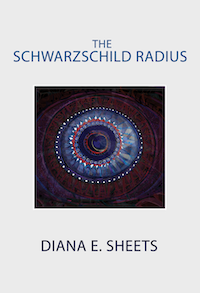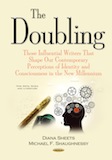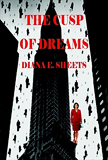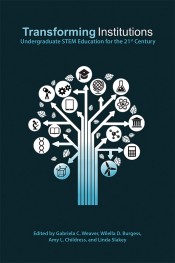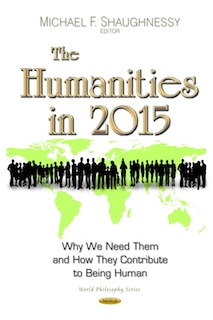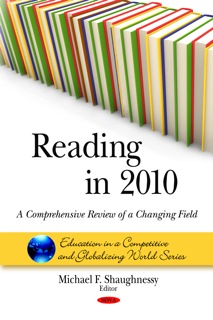The Loss of an Authoritative Culture in America and Its Impact on the Aspirational Middlebrow Reader, Part II
Copyright © 2012 by Diana E. Sheets
III Significance of the Culture Wars in the Loss of an Authoritative Culture
Nevertheless, much of our current social malaise can be squarely laid at the foot of the culture wars (1960s-1990s), which undermined America’s intellectual heritage, replacing a tradition of excellence and aspirational goals with a misguided embrace of social justice that, even if well intentioned, accelerated our decline. In the process America’s virtues (following Murray)—industriousness, honesty, as well as a strong commitment to marriage and religiosity—were overwhelmed by its vices—identity politics with its emphasis on cultural relativism, solipsism with its narcissistic rejection of external reality, and victimhood with its exaltation of personal failure as the expense of personal initiative.
In order to understand how our social and economic failings intersect with our cultural decline, it is important to revisit the history of the Great Books and their significance as a barometer of our civilization’s virtues and its failings.
i. The Great Books
Throughout much of the twentieth century, Americans were aspirational. They believed that through hard work, ingenuity, and commitment they could improve their lives and the economic prospects of their families. Until the late 1960s social class was well delineated with ethnic, racial, and gender barriers that could restrict opportunities for social mobility. Nevertheless, there was a common culture, a shared understanding of what it meant to be well read and well educated. Reading books and educational opportunities minimized to some degree the social, economic, and ethnic distinctions among Americans while potentially enhancing accessibility to those in power, the outcome of which might serve as a social equalizer.
John Doe—in the generic nomenclature of that time both implicitly male and Caucasian—might not become rich or attend an Ivy League college, but if he mastered the classics he could converse confidently with bank presidents, teachers, and local civic leaders, indeed, almost anyone. Thus when Charles W. Eliot, president of Harvard University, spoke to workers in 1909, he discussed the benefits of a “five-foot shelf,” that is, how reading fifteen minutes a day from a collection of classics would provide them with the foundations of a great education and, by implication, further their social, economic, and educational prospects. The following year the publisher P.F. Collier published the Harvard Classics, which sold 350,000 copies over the next twenty years (“The Great Books and Cultural Identity,” 156).
John Erskine, a professor at Columbia University, began an honors course for undergraduates during the Spring semester of 1921 that introduced them to many classics in Western Civilization. The course was taught by means of open-ended questions according to the Socratic method. Mortimer Adler, one of the students in the program, later became an instructor. In 1930 he joined the faculty at the University of Chicago where he and President Robert M. Hutchins pioneered a course on the Great Books. Throughout Hutchins’s twenty-two year tenure as president of the University of Chicago, the Great Books program gave heightened visibility to the institution’s reputation as a center for rigorous intellectual thought (157).
The intellectual values nurtured in the Great Books program at the University of Chicago were emulated elsewhere. An undergraduate program based on the Great Books program was developed for St. John’s College in Annapolis, which is still taught today. By 1946 there were some 5,000 programs in the Midwest. The following year the Great Books Foundation was created to develop programs throughout America. By 1951 2,500 discussion groups across the country were formed (Alex Beam, A Great Idea at the Time: The Rise, Fall, and Curious Afterlife of the Great Books, PublicAffairs, 2008, 4, 60-2, 64-5, 67-8).
In 1952, The Great Books of the Western World was published by Encyclopaedia Britannica. Hutchins was Editor-in-Chief, although Adler assumed most of the editorial responsibilities. It was a fifty-four volume collection—four more volumes than the Harvard Classics—that included 443 books written by seventy-four white men that encompassed 102 Great Ideas and a sum total of 32,000 pages. One million sets of the Great Books of the Western World were sold. Approximately 50,000 Americans participated in reading groups in 1947. Their numbers fell in the 1950s before climbing back to 47,000 by 1961 thanks to an effective advertising campaign. Nevertheless, by the 1970s sales of the Great Books were flagging and never recovered a robust readership, despite the 1990 revised edition that included works by women (Beam, 1, 3-4, 67-8, 88). With the counterculture, identity politics, feminism, and multiculturalism, the foundations of Western Civilization were under siege, and so were the Great Books.
What was the driving sentiment of the Great Books? Robert M. Hutchins, author of the first volume of the Great Books, The Great Conversation: The Substance of a Liberal Education, noted that a society united in understanding can only be achieved when its people share and engage in “the Great Conversation” of Western Civilization based on an understanding of its seminal ideas stretching back “from the dawn of history” up through the present day (Great Books of the Western World, Vol. 1, Encyclopaedia Britannica, 1988, first published in 1952, Chapter 1, “The Tradition of the West,” 1 and “Preface: The History and Purpose of This Set,” xi-xxvii. This volume is available online through Internet Archive, http://tinyurl.com/8ygu8no). To read the Great Books was to gain an appreciation of some of the greatest ideas by many of the most important thinkers of all time including Homer, Sophocles, Plato, Aristotle, Plutarch, Tacitus, St. Augustine, St. Thomas Aquinas, Machiavelli, Hobbes, Descartes, Locke, Hume, as well as contributions made by Adam Smith, Edward Gibbon, Kant, Hegel, Marx and Engels, William James, Sigmund Freud, and many others.
Beginning in the late sixties, however, European “highbrow” culture, with its perceived elitism, ethnocentrism, and hegemonic dominance, came increasingly under assault. In its place was a multicultural mosaic of different groups, each vying for “most aggrieved” status. Academic authorities, rather than risk confrontation with an increasingly diverse student body, gave way (Gitlin, 141-150). Histories of great leaders and the actions of nation states were replaced with histories about ordinary people “from below.” The Western canon was replaced with diversity, popular culture, and a fawning fascination with celebrity. This shift from high to low culture and from Western Civilization to cultural relativism reflected a realignment in the American identity from an aspirational society to a de-aspirational multicultural milieu in which identity politics and the pursuit of self-realization trumped the universality of American values. This transformation facilitated a migration from a shared culture of excellence founded on self-reliance to one based on a myriad of grievances championing redistributive social justice and the palliative virtues of the welfare state.
IV Decline of America as a Super Power
This shift in values represented a movement away from a manly culture dominated by hierarchical leadership and judgments based on technological and financial acumen to a post-industrial feminized society that emphasized the plight of children and the victimized at the expense of economic might. This cultural and social transformation coincided with the end of the Soviet Union and the emergence of America as the world’s sole superpower.
Nevertheless, America’s hegemony was short-lived. In the aftermath of September 11, 2001, her energies were focused on combating terrorism and the instabilities of the Middle East while the rise of emergent developing nations—most notably China—altered the locus of manufacturing in the global marketplace. The global financial crisis of 2008 accelerated these trends. By 2011 not only was China the leading exporter of manufactured goods and commodities worldwide, Germany outperformed the United States in at least ten out of those twelve months (Niall Ferguson, Civilization: The West and the Rest, The Penguin Press, 2011, Kindle Edition, “Conclusion: The Rivals,” 5409-5551; Floyd Norris, Manufacturing is Surprising Bright Spot in U.S. Economy, The New York Times, January 5, 2012, http://www.nytimes.com/2012/01/06/business/us-manufacturing-is-a-bright-spot-for-the-economy.html). While the United States still remains a global leader in aerospace and pharmaceutical manufacturing, increasingly it outsources its production capabilities overseas.
By way of example, Apple, which by August of 2011 Forbes rated as “the world’s most valuable company (http://www.forbes.com/sites/scottdecarlo/2011/08/11/the-worlds-25-most-valuable-companies-apple-is-now-on-top/), employs 43,000 people in America and 20,000 abroad. However some 700,000 individuals work for contractors involved in the engineering and assembling of Apple products overseas, many of them in China. While Apple was committed to manufacturing the Macintosh in America in 1983 and continued to manufacture iMacs in California as recently as 2002, two years later Apple had mostly shifted its manufacturing overseas. Asia was the primary choice and this decision was driven only in part by cheap labor (Charles Duhigg and Keith Bradsher, “How the U.S. Lost Out on iPhone Work, The New York Times, January 21, 2012, http://www.nytimes.com/2012/01/22/business/apple-america-and-a-squeezed-middle-class.html?pagewanted=all).
Foremost in the consideration was that the entire manufacturing supply chain could be situated in one locale. In the case of iPhone manufacturing, Foxconn City in China is illustrative. Foxconn Technology, a global leader of consumer electronics manufacturing, has its iPhone production center in this industrial “city.” Indeed, the entire supply chain of manufacturing needs for the iPhone is available in Foxconn City. Any screw, any gasket, any warehouse is effectively next door. Production can be immediately increased or decreased. Three thousand workers can be hired overnight. Modifications in design are quickly addressed by other companies located just steps way. The result is that manufacturing turnaround and production capabilities are greatly facilitated (Duhigg & Bradsher).
Then, there are the sheer numbers of trained engineers and industrial workers available, allowing Apple to subcontract some 8,700 engineers to oversee a 200,000-person assembly line. The scope, facility, and adaptability ensure that Apple’s manufacturing needs can scale up production effortlessly from one million phones to as many as thirty million. Given the infrastructure, the engineering capability, and the supply chain proximity, Apple can hire or downsize almost instantaneously to meet its needs. Foxconn Technology, working hand-in-hand with China, has a capability unparalleled in America. Nor is this situation likely in the immediate or near future to shift in our favor. The infrastructure is there. The supply chain is there. The engineers are there. The workers, flexible and numerous, are there, ready, if need be, to be awakened in their nearby dormitories and resume work. Food is there. Indeed, workers need never leave Foxconn City. Nothing could bode worse for America’s manufacturing future (Duhigg & Bradsher).
V The Significance of the Middlebrow Reader for the Nurturance of an Aspirational Culture
But it would be a mistake to attribute the decline of manufacturing in America and its concomitant loss of jobs, as well as our diminished global influence in the post 9/11 world to a series of unforeseen circumstances.
America’s economic decline, its loss of global hegemonic influence, even the consequences that ensued with the 2008 financial collapse, arguably, can be seen as the predictable outcome of an advanced post-industrial nation that has embraced multicultural fairness at the expense of a hierarchical and aspirational culture of excellence. This alteration in worldview requires eternal vigilance to ensure socially mandated “fairness” and represents a shift from a manly view that an individual is responsible for making his way in the world to a feminized “politics of virtue” in which victimhood and identify politics necessitate governmental intervention to ensure remedial economic justice based on the preschool principles of “play nice” (See my essay “Virtue” posted on Literary Gulag, December 12, 2007, http://www.literarygulag.com/blog/show/11).
Perhaps the most devastating consequence brought about by the demise of a highbrow culture was the loss of the aspirational middlebrow reader whose hunger for knowledge was driven, in part, by a desire for social advancement, thereby providing the financial incentives for publishers to introduce potentially worthy, if not always great literature, to the marketplace. With the loss of social status associated with reading great literature embraced by hierarchical authorities came the flood of diverting popular entertainments propagated by means of visually saturated media—radio, video, Internet, texting, comic books, and the like—that competed and won with respect to printed narratives. A renewed orality ensued and continues today. Rather than advancing our cultural achievements, however, these visually saturated narratives are devolving our cultural selves back to a preconscious emotive state (See my essay, “The Great Books and Cultural Identity,” 170-1).
The result is that reading has been degraded to a semi-literate functional skill rather than an intellectual endeavor that empowers us to imagine our world abstractly and analytically (See my essay “Reading and Thinking Critically in the Age of Disputation, Critical Thinking and Higher Order Thinking: A Current Perspective, edited by Michael F. Shaughnessy, Nova Science Publishers, 113-122, https://www.novapublishers.com/catalog/product_info.php?products_id=28202). Ironically, this shift on the part of American readers from a desire to understand great literature to a cursory interest in “dumbed down” texts saturated in video imagery coincides with the advent of a knowledge economy that necessitates a facility with words as a precondition for successful participation. So let us consider, briefly, the “battle of the brows” and its social ramifications.
i. Virginia Woolf and the Use of “Middlebrow”
The term “middlebrow” was used by Virginia Woolf in response to a review of one of her books in the New Statesman, which failed to designate her fiction highbrow. Her response was published posthumously in 1962 in a collection of her essays entitled The Death of the Moth and other Essays (“Middlebrow,” Harcourt, Brace and Company, 176-186). For Woolf, a highbrow “is the man or woman of thoroughbred intelligence who rides his mind at a gallop across country in pursuit of an idea” (177). A lowbrow, in her estimation, is “a man or a woman of thoroughbred vitality who rides his body in pursuit of a living at a gallop across life” (178). Lowbrows, she suggests, need highbrows to demonstrate their lives and make them real (178-9). Middlebrows are “betwixt and between” (180), “neither art itself nor life itself, but both mixed indistinguishably, and rather nastily, with money, fame, power, or prestige” (180).
For Woolf the categories highbrow, middlebrow, and lowbrow come perilously close to social class designations. But in her interpretation the primary class antagonism is not class warfare—the highbrows and the lowbrows—but the antagonisms between the highbrow and the middlebrow since the latter, she suggests, will do almost anything to usurp the intellectual claims of former and, as measured in monetary terms, effectively dictate the demands of the market to the peril of highbrow rigor (179-86).
Let us acknowledge some of Ms. Woolf’s concerns. The middlebrow readers if left unfettered by social constraint of what constitutes “good literature” might indeed incite publishers, in pursuit of profits, to dumb down literature, a practice we see today. But if a society is based on authority and makes judgments about what constitutes great, middling, and bad literature and if these values are validated by our cultural institutions and our intellectual mandarins, the middlebrow reader has the opportunity to become aspirational. But this requires a willful exertion of authority and an inclination to pass judgment, values out of favor today. Even more remiss in Woolf’s analysis is her failure to acknowledge that her fiction, rather than highbrow, may have actually been appealing to a refined, aspirational middlebrow palate.
ii. Russell Lynes and the “Battle of the Brows”
Woolf’s judgments, bordering on class entitlement, might for some be deemed as thinly disguised snobbery. Not surprisingly Russell Lynes, editor of Harper’s Magazine, took deadly satiric aim at her prejudices in his essay “Highbrow, Lowbrow, Middlebrow,” published in February, 1947. Lynes expanded Woof’s class distinctions to include both the upper middlebrows and the lower middlebrows (320-22, 331-333). He also anticipated the political and social class predilections of politically partisan highbrows and lowbrows in America (bi-coastal these days) who considers themselves in the ascendancy (a.k.a. the “elite” Democratic Party) while looking askance at Midwesterners (“middlebrows”). Thus, Lyons speculated that although middlebrows may be influential since “neither the highbrows nor the lowbrows like them. . .if we ever have intellectual totalitarianism, it may well be the lowbrows and the highbrows who will run things, and the middlebrows who will be exiled in boxcars to a collecting point probably in the vicinity of Independence, Missouri” (311).
Not surprisingly, this assessment brings to mind Thomas Frank’s partisan argument in What’s the Matter with Kansas: How Conservatives Won the Heart of America (2004) that populist conservatives (“Cons,” which in this instance translates to middlebrows and those God-embracing lower middlebrows) who, he suggests, are manipulated into embracing the moral claims of conservatism and its positions on abortion, immigration, and taxes to vote against the righteous (a.k.a. highbrow), progressive, secular, humanist political advocacy of social justice (opportunities for the lowbrows).
VI Matei Calinescu: The Battle of the Brows and the Emergence of the Modern Aesthete
The “battle of the brows” controversy has its origins in the development of the modern aesthete. If classical antiquity appeared to the ancients to float a-temporally outside the dimensions of chronological time, the Christian Middle Ages juxtaposed the ancient and the modern with the transubstantiation of the eternal (Matei Calinescu, Five Faces of Modernity: Modernism, Avant-Garde, Decadence, Kitsch, Postmodernism, Duke University Press, 1987, 13-5, 19). The mechanical clock, introduced in the early Renaissance, challenged theological time and brought an increased sense of urgency to past and present with the heightened anticipation of a future with its dread of a finite, human end (our mortality). Linear, historical time, the ongoing, inexorable, relentless, forward momentum that insists on chronology, rather than a-temporality, inserted itself into the daily fabric of Western Civilization (13, 19-20). Consequently, for Octavio Paz modernity is an “exclusively Western concept” closely tied to Christianity: “It could appear only within this conception of irreversible time; and it could appear only as a criticism of Christian eternity” (Calinescu, 61, quoting from Paz’s Children of the Mire: Modern Poetry from Romanticism to the Avant-Garde, Translated by Rachel Phillips, Harvard University Press, 1974).
“The old and lingering quarrel between the ancients and the moderns” (27), suggested Matei Calinescu, gained momentum in Europe in the late seventeenth century as antiquity was increasingly challenged and found wanting by modern claims of superiority (27-30). Nevertheless, the “transcendent and unique model of beauty” (31) remained vested with the ancients (32). Only in the nineteenth century, he argues, with Stendhal’s fiction, which illuminates the semantic gateway to modernity, does the emphasis shift decisively from past to the present (38-40). Stendhal’s sense of the modern was embodied in a perception of romanticism that for Calinescu “is the sense of the present conveyed artistically” (40), resting free of what came before. Thus, Stendhal’s fiction embraced “change, relativity, and, above all, presentness” (40) while, nonetheless, grounding these narratives of a durable realism (40-1).
Not so Baudelaire. For him beauty represented the “most recent, the most contemporary form of the beautiful (Calinescu quoting Baudelaire, 47),” so as to be radically distinguished from the past. It is the search for the new, “the present in its ‘presentness’” (Calinescu citing Baudelaire, 49). Beginning with Baudelaire this aesthetic is “an aesthetics of imagination, opposed to any kind of realism….” (55). For Baudelaire “modernity” is not an imitation of the banality of the real, it is the aesthetics derived from imagination (54-55). It is, suggests Calinescu, “a privileged semantic space, a locus where opposites coincided and where, for a fleeting instant, the poetic alchemy was rendered possible by which mud is changed into something rich and strange” (86).
The Medieval distinction between the ancient, which was venerated, and the modern, which represented the newcomer, gradually shifted, beginning in the Renaissance and extending through the Enlightenment, from its associations with Christianity (59). Romanticism, a reaction against the principals of the Enlightenment and the technical innovations of the Industrial Revolution, fostered two antithetical notions of modernity: the industrial, technological, and scientific modernity of the bourgeois versus the aesthete. Steeped in Romanticism, supersaturated with self-consciousness, disdainful of realism, repugnant toward rationality, embracing the present in a willful desire to annihilate the relentless march of diachronic time, the aesthete celebrated the destructive powers of artifice and decadence in an amoral, secular universe. If the former was industrious, the latter was hedonistic. If industrial modernity embraced the outward trappings of commercialism, aesthetic modernity turned inward in a futile gesture of resentment against machine-wrought materiality (41-2).
Naturally, the aesthete modernist rejected the bourgeois concept of modernity (42-3), a state of mind that for twentieth century writers would be associated as middlebrow. To be highbrow was to be an aesthete, to have intellectual or artistic sensibilities that established one’s uniqueness in the world (42-5). One’s aesthetics, accordingly, could not be commoditized. In the “Age of Mechanical Reproduction” (borrowing and reinterpreting Walter Benjamin’s terminology), the aesthete resisted all efforts to be categorized by 0s and 1s.
Out of Modernism emerged the avant-garde, born of “romantic utopianism” and its “messianic fervors” (96). The avant-garde expropriated the characteristics of Modernism while subversively upending them (96). Since, Calinescu suggests, modernity is a “culture of crisis” (124), the avant-garde artist became inexorably tied to “the crisis of Man in the modern desacralized world” (125). For Ortega y Gasset, nineteenth century realism was humanistic whereas the modernism of the early twentieth century, as embodied by cubists and futurists, was profoundly dehumanizing (Calinescu,125, referencing Gasset’s The Dehumanization of Art, translated by Helene Weyl, Princeton University Press, 1968).
But if the avant-garde movement, arising as it did from the vanguard of modernism, was “a deliberate and self-conscious parody of modernity itself” (141) intent on forward motion through time (121-2), by the 1960s the diachronic had been felled. Postmodernism, suggests music critic Leonard B. Meyer, is a “fluctuating steady-state” of relativistic judgments resistant to hierarchical categorization of historical events into “reigns, epochs, style periods, movements and the like….” (Calinescu, 147, quoting from Meyer’s chapter “History, Stasis, and Change” in Music, the Arts, and Ideas: Patterns and Prediction in Twentieth-Century Culture, University of Chicago Press, 1967).
The result, Calinescu argues, is the natural outcome of modernism and postmodernism’s replacement of a Christian diachronic time—with its concern with “humanity’s final redemption from the original Adamic sin” (274)—with a relativistic atemporal universe in which “old and new, construction and destruction, beauty and ugliness have become through cultural relativization almost meaningless categories. . . .” (148) The consequence? Art and anti-art are indistinguishable; they become one. “And stasis,” Calinescu concludes, “is just the most observable aspect of a crisis that seems to have become the major criterion of any significant artistic [and intellectual] activity” (148).
For Brian McHale the distinctions of modernism versus postmodernism are best understood from the vantage point of poetics. Modernism, from that perspective, is concerned with epistemological issues: “what is there to be known? who knows it? how do they know it and with what degree of certainty?” By contrast postmodernism is ontological: “what is a world? what kinds of world are there, how are they constituted, and how do they differ?” But at the extremities, these seemingly antithetical perspectives come together to form not oppositional linear counterpoints but a circular modality that is inherently reversible. Thus for McHale if you “push epistemological questions far enough and they ‘tip over’ into ontological questions—the progression is not linear and one-way but circular and reversible” (Calinescu, 306, quoting Brian McHale’s “Change of Dominant from Modernist to Postmodernist Writing,” Approaching Postmodernism, Eds. Douwe Fokkema & Hans Bertens, John Benjamins, 1986, 53-79).


